The Story of Louis Pasteur

Brief Synopsis
Cast & Crew
William Dieterle
Paul Muni
Josephine Hutchinson
Anita Louise
Donald Woods
Fritz Leiber
Film Details
Technical Specs

Synopsis
In 1860, chemist Louis Pasteur is scorned by most doctors because of his theory that germs cause disease. When a doctor is killed by the husband of one of his patients who died of puerperal fever, because the husband read Pasteur's pamphlet advocating the sterilization of instruments, Pasteur is ordered to stop publishing. Ten years later, there is an epidemic of anthrax in France which is decimating the livestock needed to pay war reparations to Prussia. Only one area has no problem with the disease. Dr. Radisse and his assistant, Dr. Jean Martel, investigate and learn that Pasteur has been inoculating the district's sheep for free. Although Martel is curious and stays behind to study with Pasteur, Radisse is skeptical. He believes that for some reason the soil in the area is free of the disease, and to prove his theory he imports sheep. Pasteur tries to stop him, and another doctor proposes that Pasteur inoculate half the sheep to see if his vaccine is really effective. At the end of the test, all the inoculated sheep are alive while the uninoculated ones are dead. After watching a villager die from rabies, Pasteur begins work on a cure for the disease. He has no luck until Dr. Charbonnet injects himself with rabies virus to prove it cannot cause the illness. When he does not become ill, Pasteur realizes that the virus loses its virulence over time and conceives the idea of injecting increasing amounts of rabies virus in order to build resistance. He reluctantly experiments on a small boy bitten by a rabid dog. In the meantime, Pasteur's daughter Annette, who has married Martel, is about to give birth. The only doctor available to attend her is Pasteur's old enemy Charbonnet. Pasteur insists that he use sterile means to deliver the child, and Charbonnet agrees if Pasteur will sign a letter testifying that his studies are worthless in light of the fact that Charbonnet did not contract rabies. To save his daughter, Pasteur agrees. When the bitten child recovers, however, Charbonnet is humbled and admits Pasteur's genius. After suffering a stroke, Pasteur is at long last honored for his achievements on his seventieth birthday.

Director
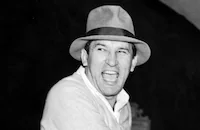
William Dieterle
Cast
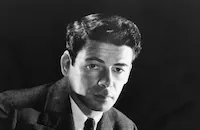
Paul Muni

Josephine Hutchinson

Anita Louise
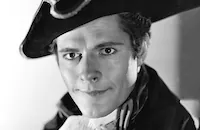
Donald Woods
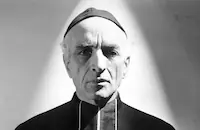
Fritz Leiber

Henry O'neill
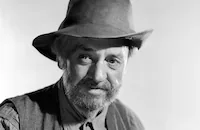
Porter Hall
Raymond Brown

Akim Tamiroff

Halliwell Hobbes
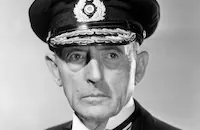
Frank Reicher

Dickie Moore
Ruth Robinson

Walter Kingsford
Iphigenie Castiglioni
Herbert Corthell
Niles Welch

Leonard Mudie
Brenda Fowler
Herbert Heywood

Andre Beranger

Edward Van Sloan
Frank Mayo
Robert Strange
Eric Mayne

Alphonse Ethier
Manson Behfeld
John Picorri
William Burress
Jean Perry
Ralph Fitzsimmons
Montague Shaw
Otto Hoffman
Richard Alexander
Frederick Peters
Lottie Williams
Baron Hesse
Wheaton Chambers
Isabelle Lemal
Otto Fries
J. Bonini
Marie Wells
Blanche Franke
Leonid Snegoff
Fred Walton

Wilfred Lucas
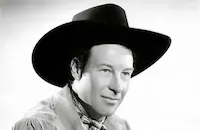
Gordon Elliott
Jack Santero
Ferdinand Schumann-heink
Frank Ward
Florence Fair
Frank Darien
Mabel Colcord
Tempe Pigott
Paul Weigel
Anders Van Haden
Crew
Milo Anderson
Henry Blanke
Pierre Collings
Ralph Dawson
S. Charles Einfeld
Leo F. Forbstein
Tony Gaudio
Sheridan Gibney
Robert M. Haas
Charles Lang
Major Nathan Levinson
Gene Lewis
Frank Shaw
Jack L. Warner

Photo Collections
Videos
Movie Clip




Trailer
Hosted Intro
Film Details
Technical Specs

Award Wins
Best Actor
Best Screenplay
Award Nominations
Best Picture
Articles
The Story of Louis Pasteur
The notorious memo from an unnamed Warners executive also ordered that the film should show no experimentation on dogs because the SPCA would object; that no childbirth fever be shown because it might frighten women and cause them to stop having babies; and that no names of Russian scientists be mentioned because publisher William Randolph Hearst might object and withdraw the services of his mistress, actress Marion Davies, from the studio. The memo also suggested that the plot of Pasteur focus on a long-suffering love affair between the chemist and a young woman from his university days that he is unable to win until he is acclaimed and famous. "At the age of 80," was the wry comment of scenarist Sheridan Gibney, who, with his writing associates, wisely ignored the studio's suggestions.
Lack of faith among the Warners bigwigs meant that The Story of Louis Pasteur was made on a remarkably low budget - $330,000, the bare minimum at the time for an "A" picture. No new sets could be built; previously used ones were merely redecorated. The Academy of Science indoor amphitheater, for example, had been a nightclub set for a Busby Berkeley production number. Despite these limitations, the artistry of Muni and his colleagues shows through. In addition to an Oscar® to Muni as Best Actor, the film won the categories of Best Original Story and Best Screenplay, and was nominated as Best Picture. Although he was not nominated, another outstanding contributor was cinematographer Tony Gaudio, who lighted and photographed the meager sets with such mastery that a London film critic would describe him as "an artist who has achieved shots worthy of being hung in the world's great galleries."
Director: William Dieterle
Producer: Henry Blanke
Screenplay: Pierre Collings, Sheridan Gibney, Edward Chodorov (uncredited), from story by Collings and Gibney
Art Direction: Robert M. Haas
Cinematography: Tony Gaudio
Costume Design: Milo Anderson
Editing: Ralph Dawson
Original Music: Bernhard Kaun, Heinz Roemheld (both uncredited)
Cast: Paul Muni (Louis Pasteur), Josephine Hutchinson (Marie Pasteur), Anita Louise (Annette Pasteur), Donald Woods (Dr. Jean Martel), Fritz Leiber (Dr. Charbonnet), Henry O'Neill (Dr. Emile Roux), Akim Tamiroff (Dr. Zaranoff), Dickie Moore (Joseph Meister).
BW-86m. Closed captioning.
by Roger Fristoe

The Story of Louis Pasteur
Quotes
Trivia
Notes
At various times prior to release the film was entitled Enemy of Man, The Fighter, and Death Fighter. Paul Muni won the Oscar for Best Actor for his performance as Pasteur. Writers Sheridan Gibney and Pierre Collings also won Oscars for Best Original Story and Best Screenplay. The film was nominated for Best Picture and was on the New York Times list of the best films of 1936, and the Film Daily list of ten best films. The National Board of Review named it the best picture of 1936 and it was one of the top moneymaking films of the year.
A news item in Daily Variety notes that over 100 notes were received from anti-vivesectionists angered by a film honoring Pasteur, claiming that his experiments were cruel to animals. Modern sources note that Muni was also awarded the Volpi Cup by the International Cinema Exposition Committee in Venice, Italy. Muni and Leiber repeated their roles for a radio adaptation which was broadcast on the Lux Radio Theatre over CBS on November 23, 1936. In his autobiography, producer Hal Wallis notes the extensive research performed by the studio. Files at the Mayo Clinic trophy room and the Bausch-Lomb Corporation Library were studied. The Breen office insisted that dead or dying sheep must not be shown on screen. Modern sources note that Gibney worked almost alone on the screenplay as co-author Collings was too seriously ill to write; Wallis did not like the material and asked to have Gibney replaced by Laird Doyle, but at Muni's insistence Gibney was retained, and to punish Muni, the film was budgeted at under $400,000 and was filmed partially on converted musical film sets-in one case a Busby Berkeley set became the palace of Napoleon III-and the laboratory set from The Mystery of the Wax Museum. Modern sources also note that Warner Bros. was not convinced that the film would attract an audience and initially sold it to exhibitors for a smaller than usual percentage of the gross. The film's success convinced Wallis to proceed with another medical biography, he notes in his autobiography, and he and Robert Lord soon began preparations for a film on Florence Nightingale ( for The White Angel). Modern sources add the following credits: Makeup Clay Campbell.

Miscellaneous Notes
Released in United States 1936
Released in United States 1936
















